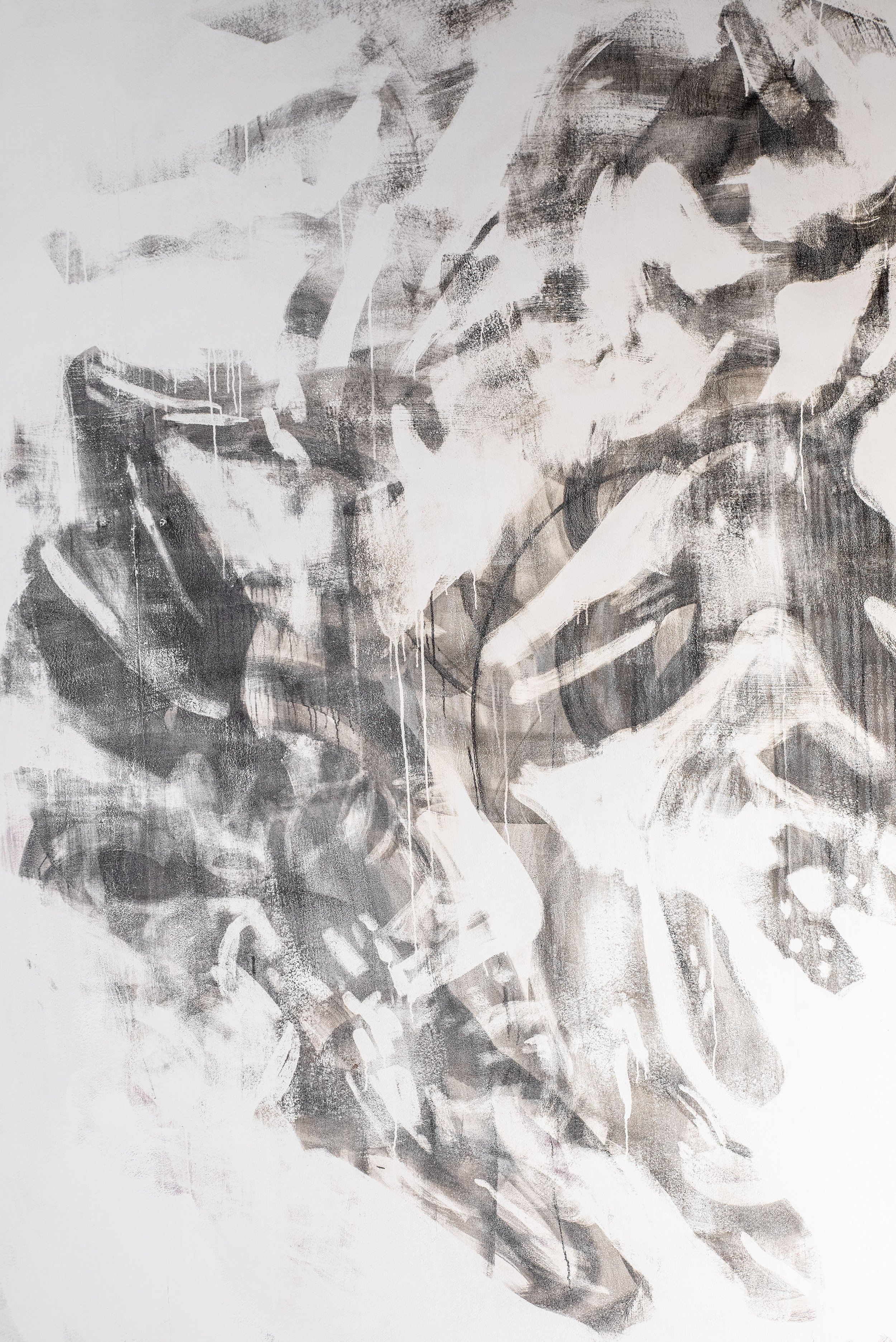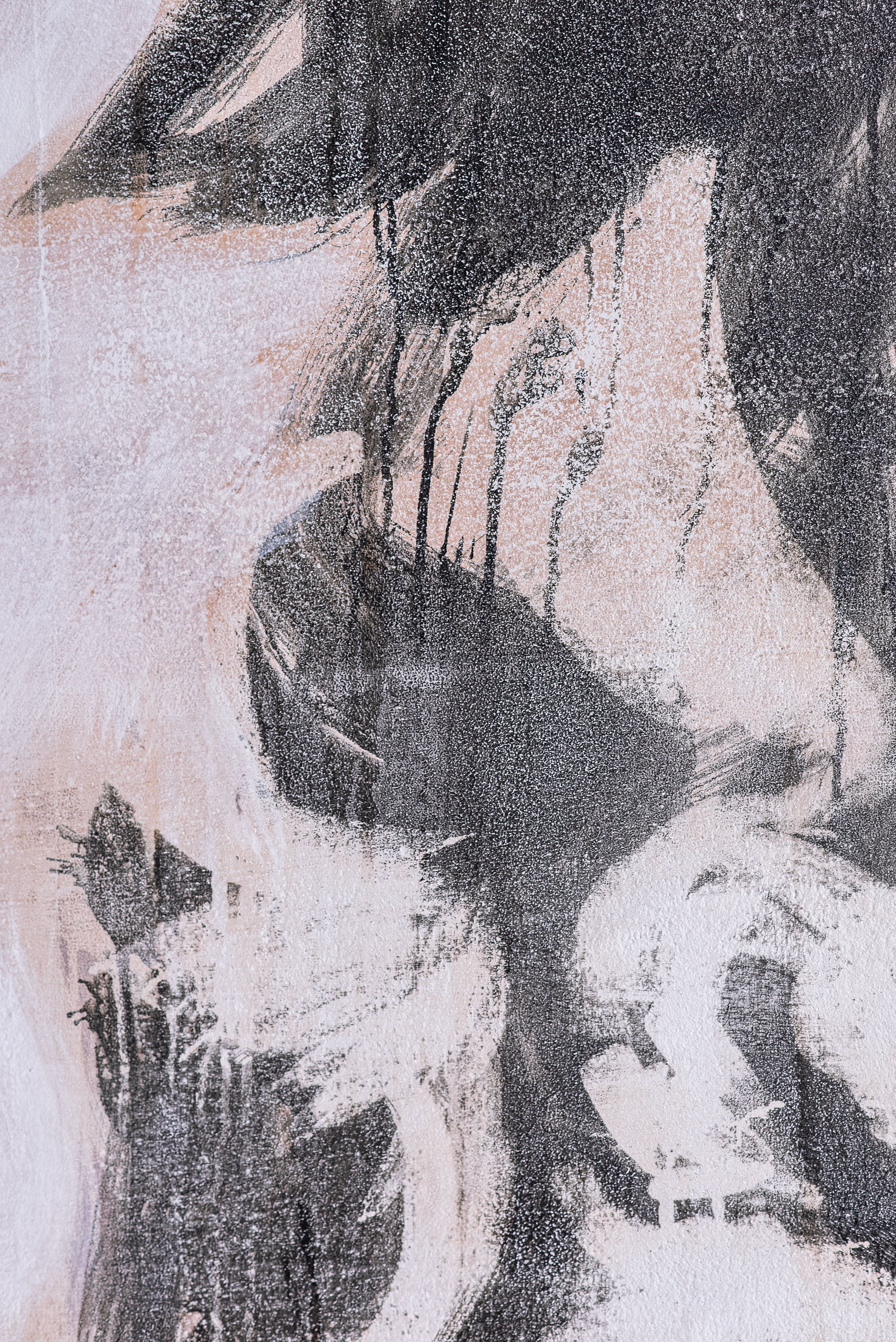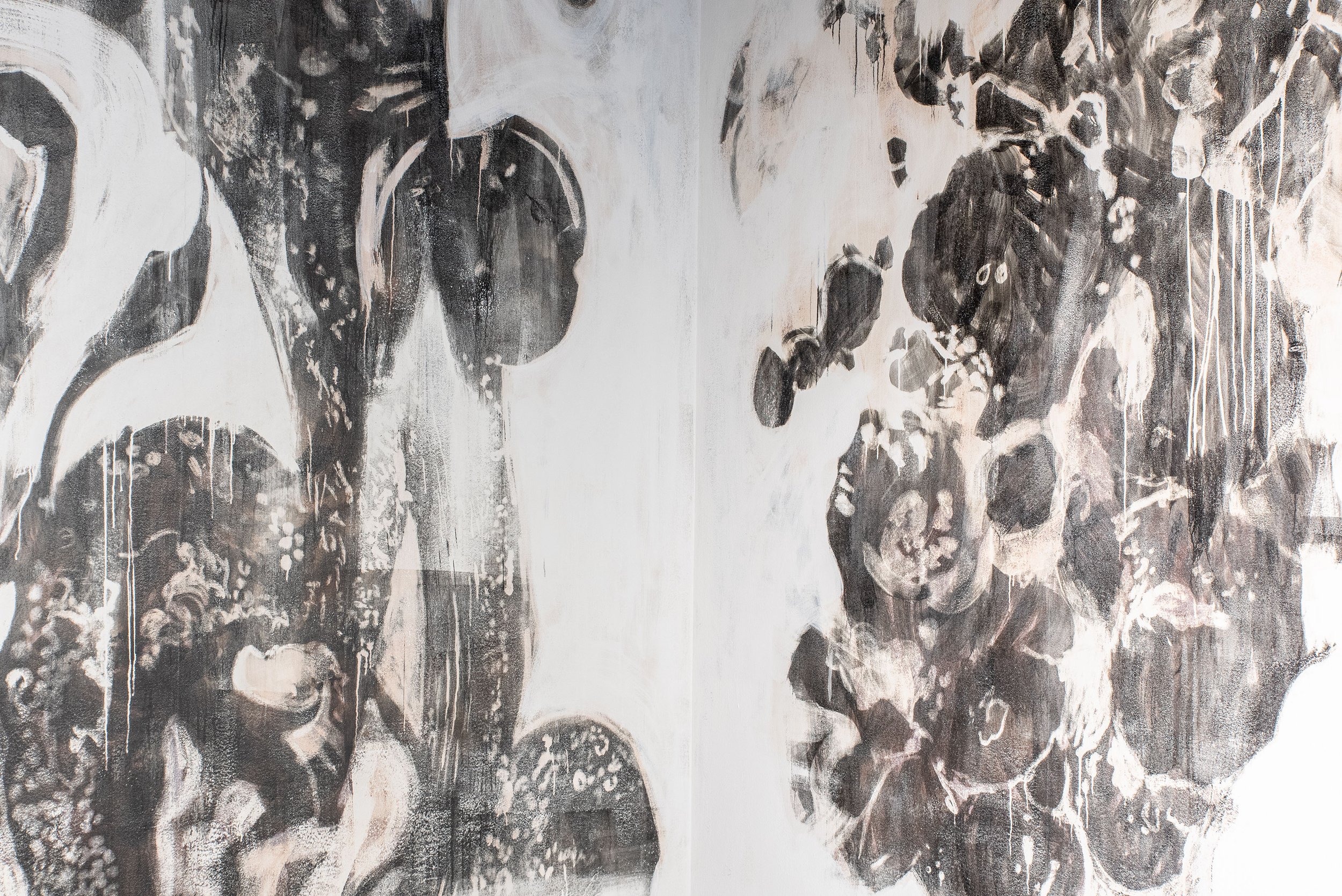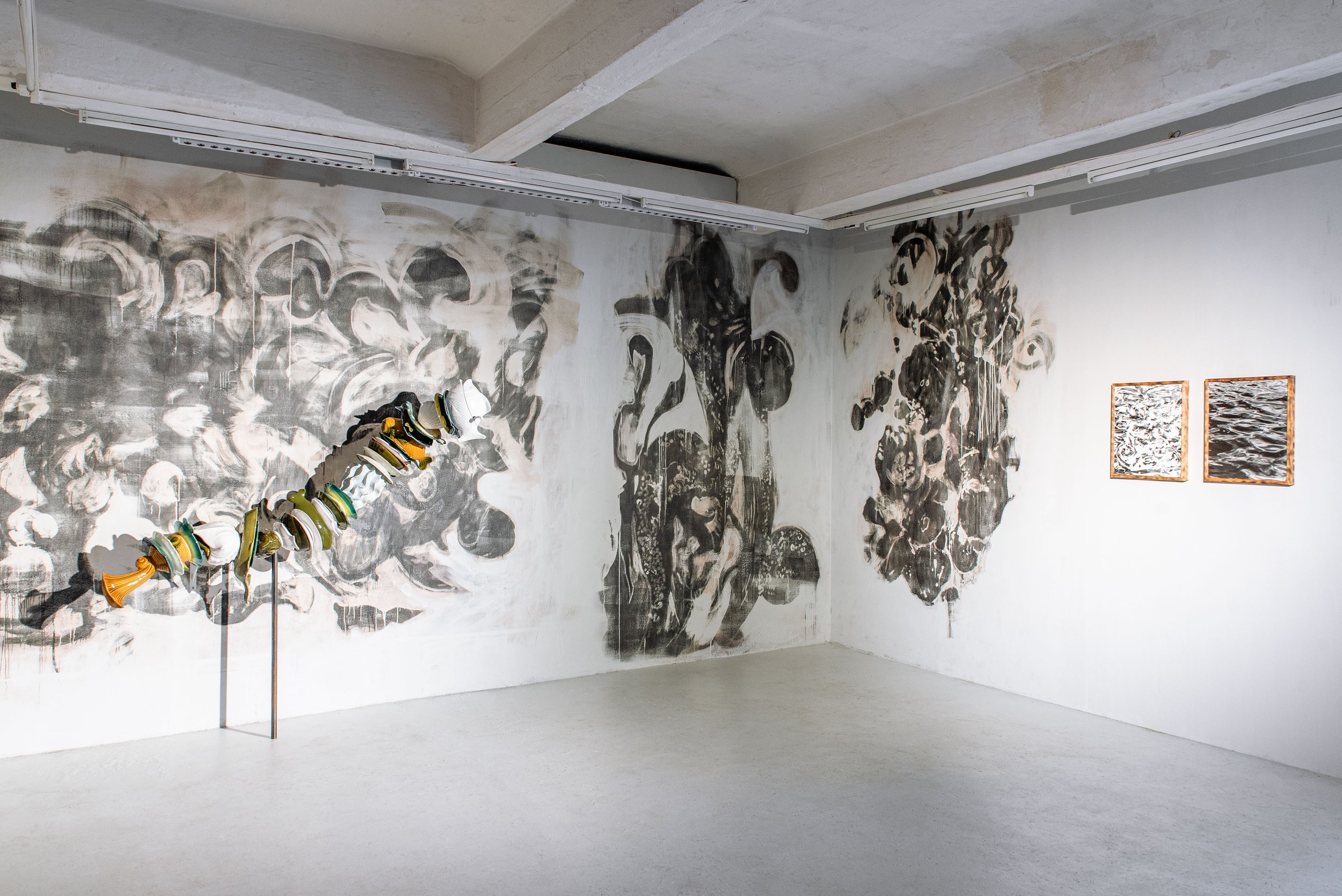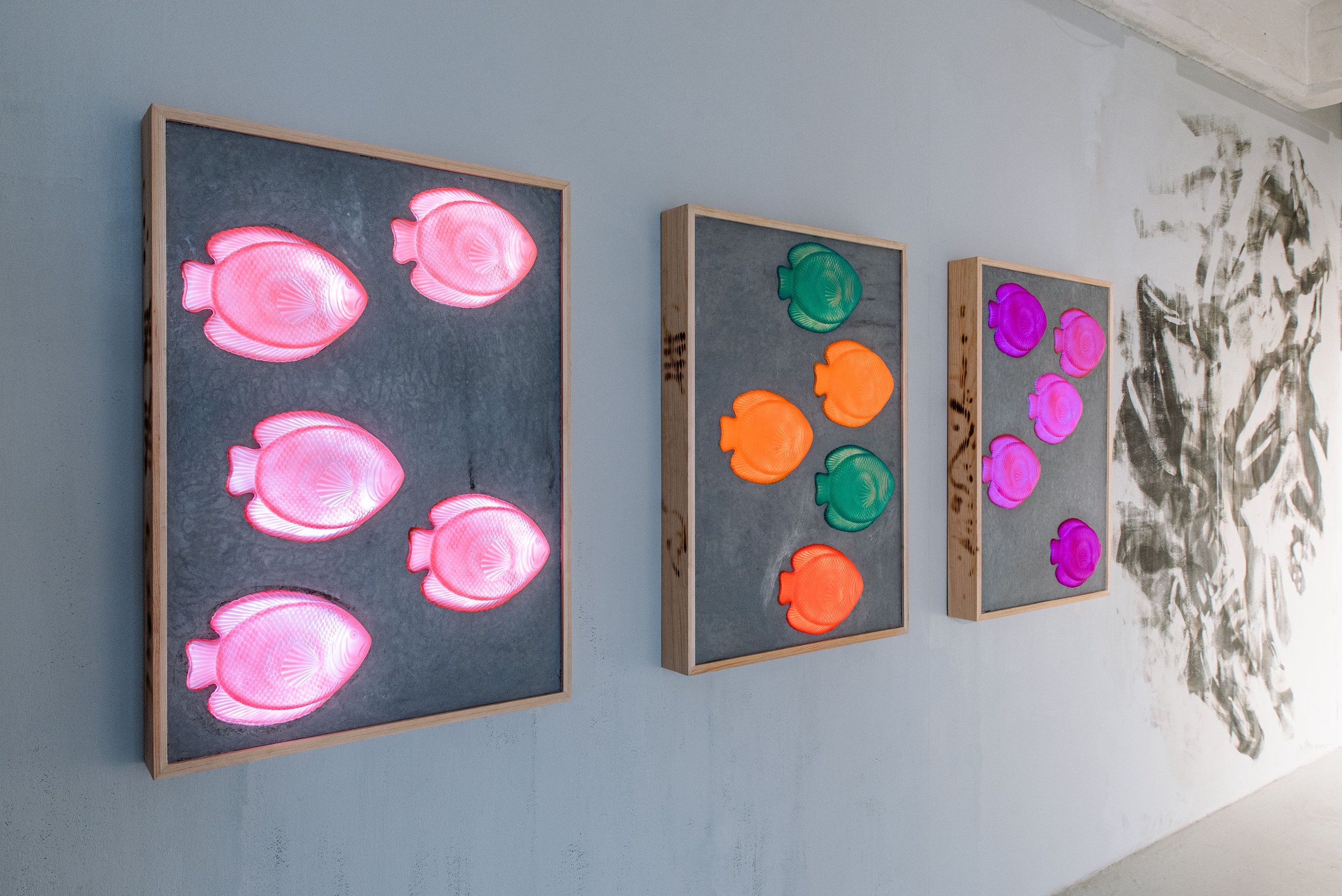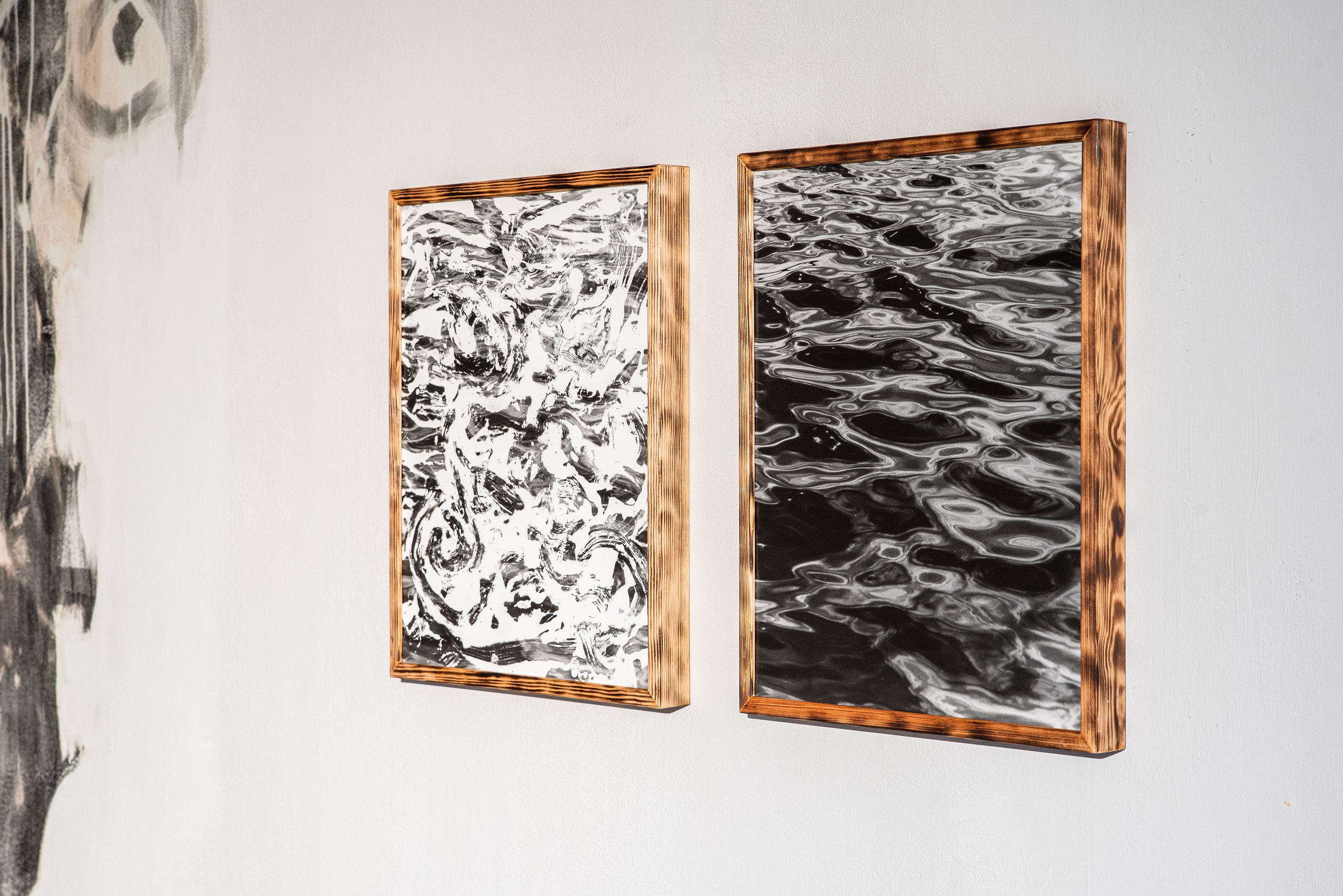Coral Teeth
According to Greek mythology, few mortals re-surface alive after a visit to Hades down the River Styx. This descent, traversing from the land of the living into that of the dead, is called katabasis - sinking ever deeper into the unknown with no promise of a return. ‘Coral Teeth’ embarks on a kind of artistic katabasis, as it ventures to the deepest parts of the ocean.
Exploring the chthonic space is something both Maik Gräf and Lulu MacDonald navigate in their separate practices. In this collaborative show, the two artists explore the darkness of the ocean together and plunge ever further into its watery depths. Like deep sea divers, they succumbed to the murky wetness of the dark room, a space which felt instinctive to Gräf, a photographer, who moved around in the dark with ease, understanding when he must take a break, breathe the light. As they descended, sculptor MacDonald held onto Gräf like a diver's guiding rope, carefully experiencing the dark room for the first time, as her lungs acclimatised and her eyes adjusted.
'Coral Teeth' is the second exhibition in a three part series called 'Mining The Deep', an underwater odyssey plummeting from the ocean’s surface to the deep and finally encountering the seabed itself. The ocean figures as this show’s protagonist as the artists collaborate and combine their practices and material understandings much like crew on an explorative voyage or scientists conducting field research.
This show revels in how the wet darkness of developing photographs mimics the qualities of the ocean underworld it seeks to capture. Using light as pigment and chemicals as mark makers, Gräf and MacDonald build images which were repetitively doused, drowned and drenched in darkness.
Fascinated by the sloppy and inky boundaries between wet and dry, light and dark, positive and negative spaces within their collaborative practice, MacDonald learnt how to develop layers of image and Gräf learnt how to sculpt them. Together, they navigated this all whilst the language surrounding the process was fraught with elusive riddles with moral implications; seeing the light, exploring the darkness become linguistic stumbling blocks whilst trying to retrieve information from the underworld. The artists grappled with the nuances of flooding the developing paper or creating droughts on the page, but it was only by allowing themselves to be buried within both extremes that allowed for the process to take place most organically. By relinquishing these moral and linguistic expectations, the artists found this only reaffirmed the sticky and blurry space between each pair of opposites: light and dark, wet and dry, image and sculpture.
The results remain a gesture only partly controlled by the artists’ hands as they welcomed darkness into the room as their third collaborator to make the final decision of how the work will exist.
Light and dark are therefore not only tonal and pictorial but they also become sculptural, allowing them to transform into materials as well as characters in an exhibition which navigates the liminality of the ocean: a space of queerness, possibility and radical imagination. The ocean offers us a space to re-become, repetitively re-examine our relationship with bodies and our relationships to one another. This all becomes more poignant when it is considered that the ISA are currently building a moral compass about how the international sea bed should be allowed to be mined on the free market. It speaks to this human inability to co-exist peacefully with the mysterious, the elusive as we insist on perceiving, probing and drilling into every space we don’t yet understand.
So now, we beckon you on the banks of the River Styx. Take a deep breath and dive with us.
By Lulu MacDonald

